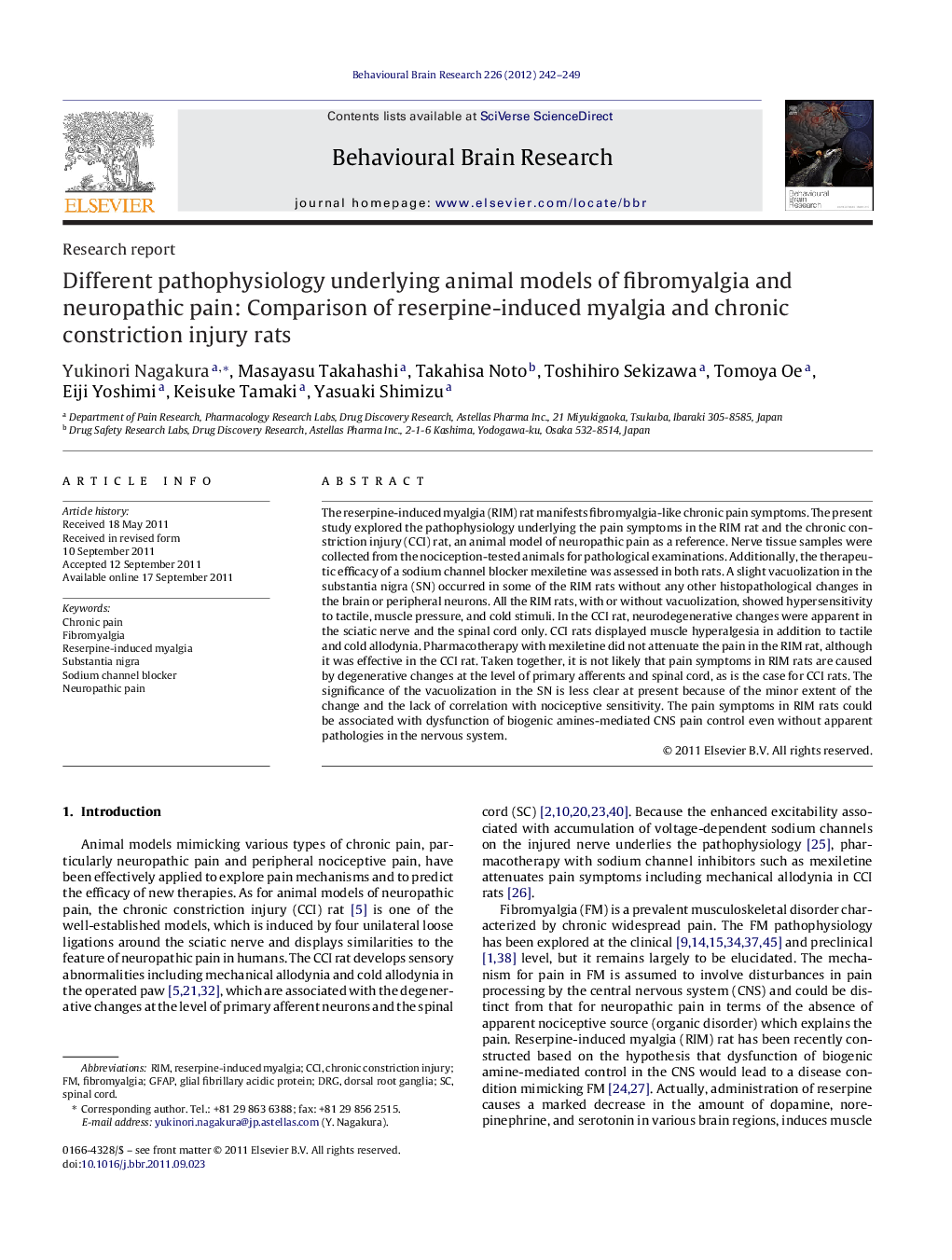| کد مقاله | کد نشریه | سال انتشار | مقاله انگلیسی | نسخه تمام متن |
|---|---|---|---|---|
| 4313515 | 1289999 | 2012 | 8 صفحه PDF | دانلود رایگان |

The reserpine-induced myalgia (RIM) rat manifests fibromyalgia-like chronic pain symptoms. The present study explored the pathophysiology underlying the pain symptoms in the RIM rat and the chronic constriction injury (CCI) rat, an animal model of neuropathic pain as a reference. Nerve tissue samples were collected from the nociception-tested animals for pathological examinations. Additionally, the therapeutic efficacy of a sodium channel blocker mexiletine was assessed in both rats. A slight vacuolization in the substantia nigra (SN) occurred in some of the RIM rats without any other histopathological changes in the brain or peripheral neurons. All the RIM rats, with or without vacuolization, showed hypersensitivity to tactile, muscle pressure, and cold stimuli. In the CCI rat, neurodegenerative changes were apparent in the sciatic nerve and the spinal cord only. CCI rats displayed muscle hyperalgesia in addition to tactile and cold allodynia. Pharmacotherapy with mexiletine did not attenuate the pain in the RIM rat, although it was effective in the CCI rat. Taken together, it is not likely that pain symptoms in RIM rats are caused by degenerative changes at the level of primary afferents and spinal cord, as is the case for CCI rats. The significance of the vacuolization in the SN is less clear at present because of the minor extent of the change and the lack of correlation with nociceptive sensitivity. The pain symptoms in RIM rats could be associated with dysfunction of biogenic amines-mediated CNS pain control even without apparent pathologies in the nervous system.
► We explore pathophysiology of fibromyalgia-like reserpine-induced myalgia rat model.
► Degenerative changes at the level of primary afferents and spinal cord are not responsible for pain symptoms.
► A sodium channel blocker does not reduce hyperalgesia.
► Dysfunctional brain pain control is involved in the pathophysiology.
► Pathophysiology of the model is distinct from that for the neuropathic pain state.
Journal: Behavioural Brain Research - Volume 226, Issue 1, 1 January 2012, Pages 242–249